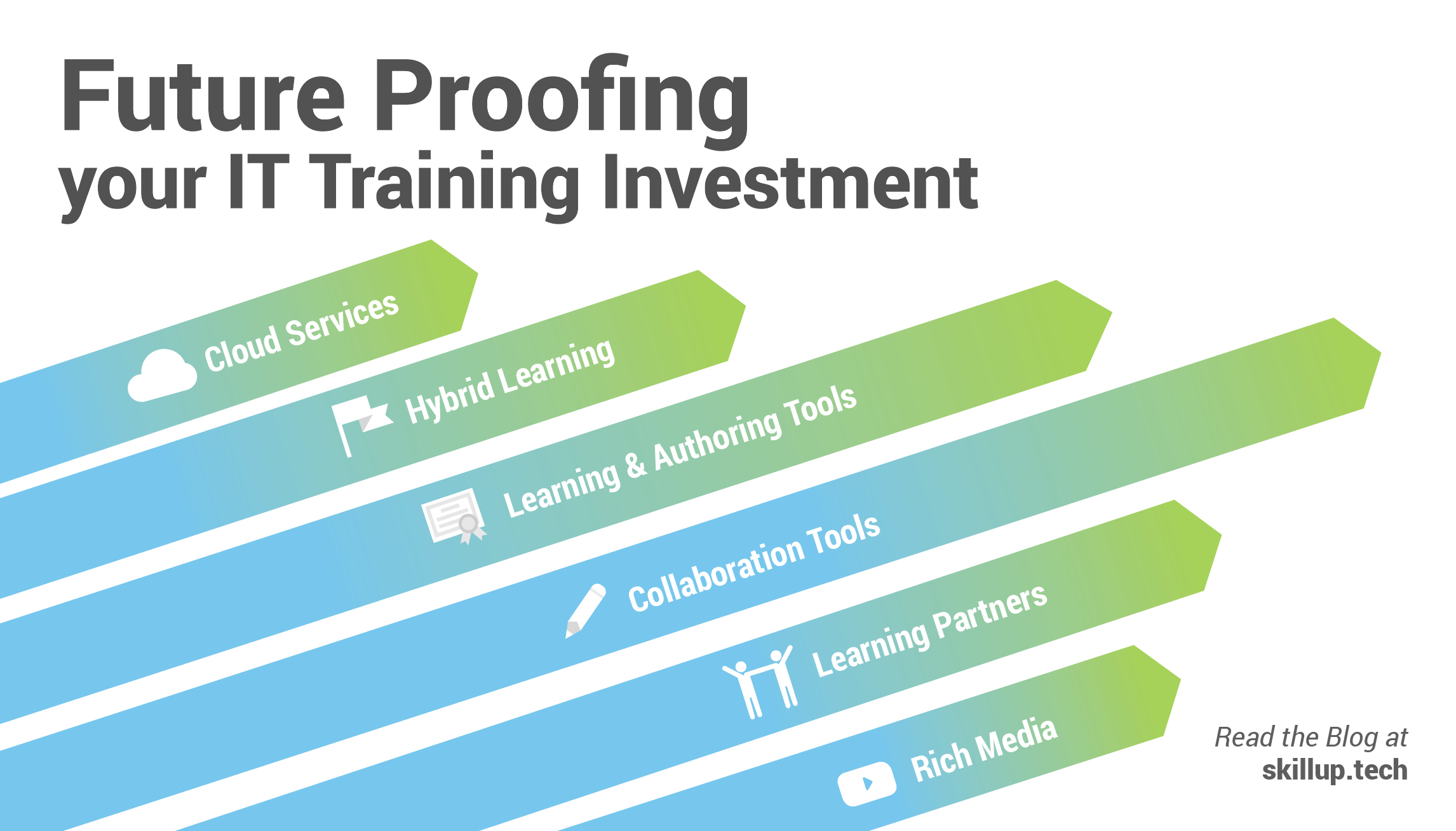Educational leaders constantly face the challenge of keeping pace in a rapidly changing digital world. For IT leaders, this requires a nimble approach to training development and delivery. How can they future-proof their IT training investments while still providing the best educational opportunities for employees?
Before looking for a solution, it’s essential to examine the specific challenges IT managers face. These include:
- rapidly changing technology
- a rise in remote workers and distributed offices
- an increasingly diverse workforce
- limited budgets for learning material development
Future-proofing IT training around these challenges is possible with careful planning and the integration of flexible solutions.
“Technology is evolving so rapidly that at just two years into a new IT career, 90% of your employee’s working knowledge will come from on-the-job training.”
Gurmukh Singh – CMO, Skill-Up Technologies
Hybrid Learning
Hybrid learning combines more traditional face-to-face training methods with online tools and digital media. This allows organizations to meet the needs of employees around the globe without requiring additional travel expenses and disruption. Learners can complete training at convenient times and locations, which can also have a positive impact on the bottom line. It also gives organizations the flexibility to provide training as needed, rather than at less convenient intervals.
Rich Media
Rich media takes potentially dry course materials and enhances them by incorporating images, infographics, video, animation and interactive elements that appeal to a range of personalities, abilities, and learning styles. In addition to better support for diverse learners, rich media has shown to be more engaging which allows for better content retention.

Collaboration Tools
A distributed classroom requires specialized tools to support learning and collaboration. Video chats, forums, chat rooms, shared whiteboards, and other communication platforms create opportunities for learners and educators to share ideas and work together, even in different time zones. The ability to provide for asynchronous learning is essential for remote workplaces.
Powerful Learning/Authoring Tools
Content may be king, but it is useless without tools for creating and accessing it. A learning management system allows for tracking students, content, grades, and evaluations. Authoring tools allow educators to quickly update courses as needs arise. Interactive lessons shift students from passive learning to a more active process. All of these are essential for a hybrid learning system.
The best authoring and learning tools:
- support a variety of devices and screen sizes
- are easy enough for a wide range of users
- provide localized language options
Cloud Services
Cloud services remove a significant burden from the organization’s local network infrastructure, while also providing stability, speed, and ease of access to students around the world. And if downtime decreases, learning can increase.
Learning Partners
In some cases, especially with rapidly changing technology, it’s most efficient to farm out training needs to specialized learning partners who have the resources to keep their educational content constantly up to date. This may be more cost effective than creating custom content in cases where the material can be generalized for a range of organizations. It also frees up resources to focus on other training needs.
While change in the digital world is taking place at a dizzying speed, the educational world has also been evolving. Thankfully there are a range of tools, learning partners, and other resources for helping organizations modernize and future-proof their training programs.


